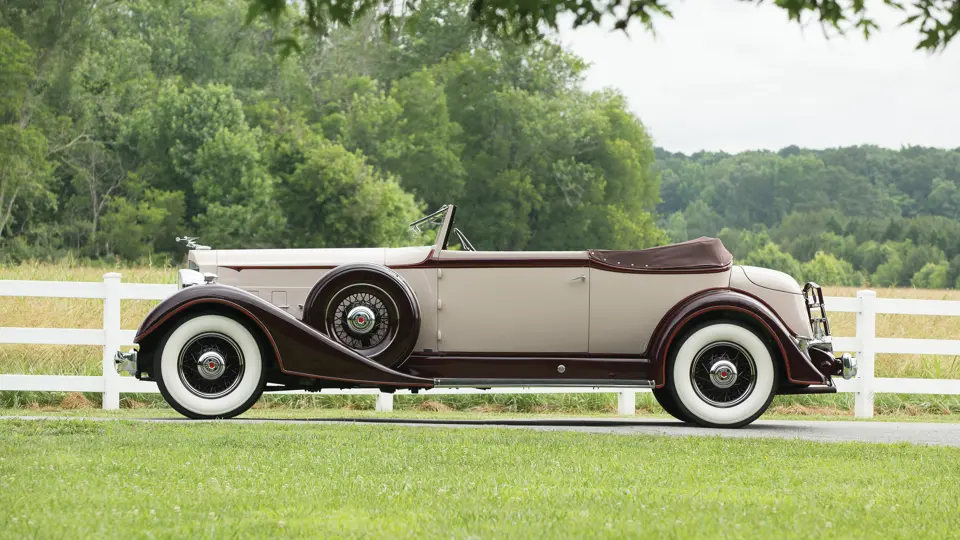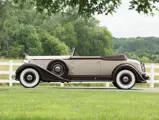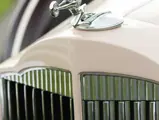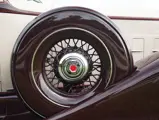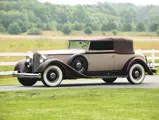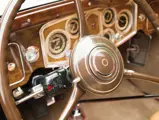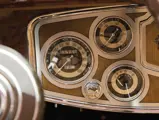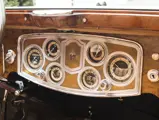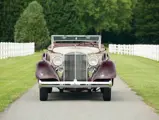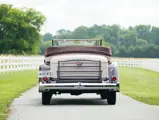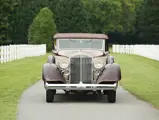Series 1104. 145 bhp, 384 cu. in. L-head inline eight-cylinder engine, three-speed synchromesh manual transmission, front and rear semi-elliptic leaf-spring suspension with variable-pressure shock absorbers, and vacuum servo-assisted four-wheel mechanical drum brakes. Wheelbase: 142 in.
When James Ward Packard debuted his first automobile in 1899, he was but one of dozens of would-be automobile moguls. By the 1930s, however, most of Packard’s early contemporaries had fallen by the wayside, and the exceptional vehicles bearing the Packard name were truly among the world’s finest.
Packard was the king of the road, as it combined stunning good looks with industry-leading mechanical refinements and elegant appointments that simply had no superior. Simply put, for almost its entire history the Packard was the best built American car at any point in time, and it maintained its extraordinarily high standards for over 50 years.
For many, the 1934 model Packards, which the factory designated the Eleventh Series, represent the height of the company’s pre-war efforts. They were the final models with traditional open fenders, albeit gently skirted, and the upright radiator shell for which the company had become well known. Books have been written solely about this model year Packard, and it is widely considered among the most beautiful of all Classic Era production automobiles.
The Eleventh Series Packard offered here features the massive 142-inch wheelbase 1104 Super Eight chassis on balloon tires, isolating the passengers from all but the worst bumps. A Ride Control lever allows the driver to adjust the resistance of the hydraulic shocks from soft and cushy to a firmness that would tighten handling and give a true feel of the road. Under the hood, a regulator monitors and controls oil temperature, allowing the use of the same viscosity lubricant year-round. The first full-flow oil filter, a larger pump, and an oil pressure regulator further ensured that things would literally run as smoothly as possible.
According to its data plate, the lovely example here was delivered in September 1933 through Packard Motorcar Company in Boston, Massachusetts. It is an older restoration that has been finished in a lovely grey-blush with burgundy fenders and red pinstriping. The exterior brightwork, including that found on the headlights from the more senior Twelve, is excellent, while the paint shows only light wear from use. The engine bay remains correct and presentable, as does the underside, and they would require only a thorough clean-detailing to restore their luster. The tan leather upholstery and overall interior are in excellent condition and display only minor wear from use, and the cloth top does not appear to have ever been lowered.
This Packard’s overall impression is one of genuine elegance. Its lines, colors, and accents automatically draw the eye, and the pleasing harmony of the whole vehicle, plus the obvious craftsmanship that went into its creation, make it more than a very desirable classic car. It is a genuine work of art, and it displays the good taste of its owner as effectively as it did in 1934.

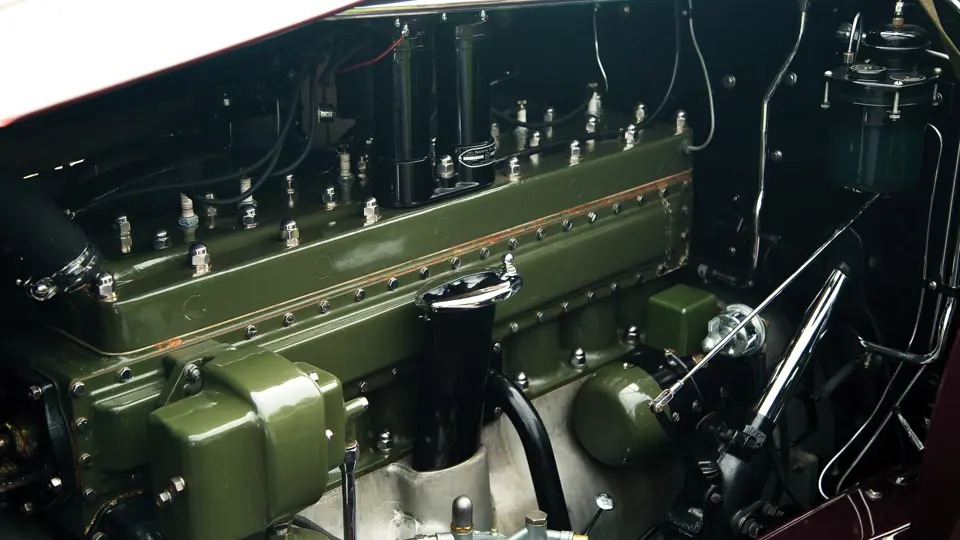
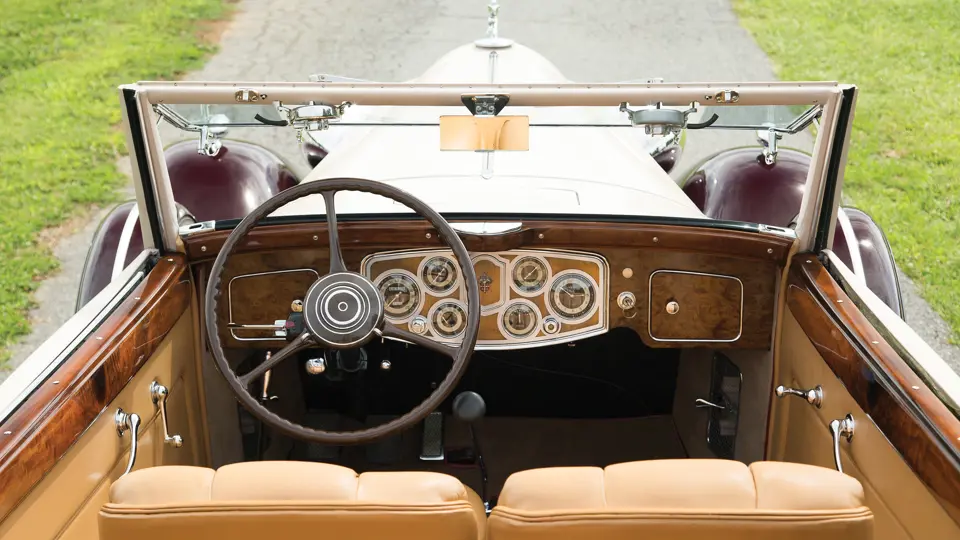

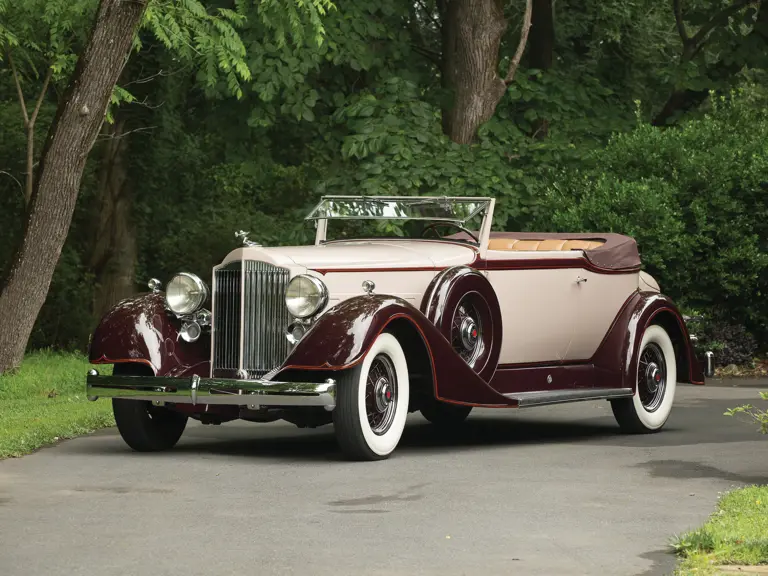

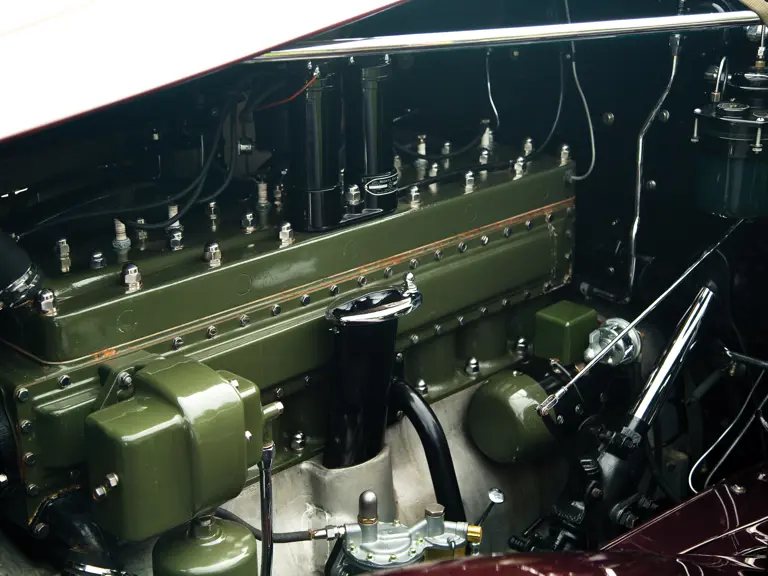
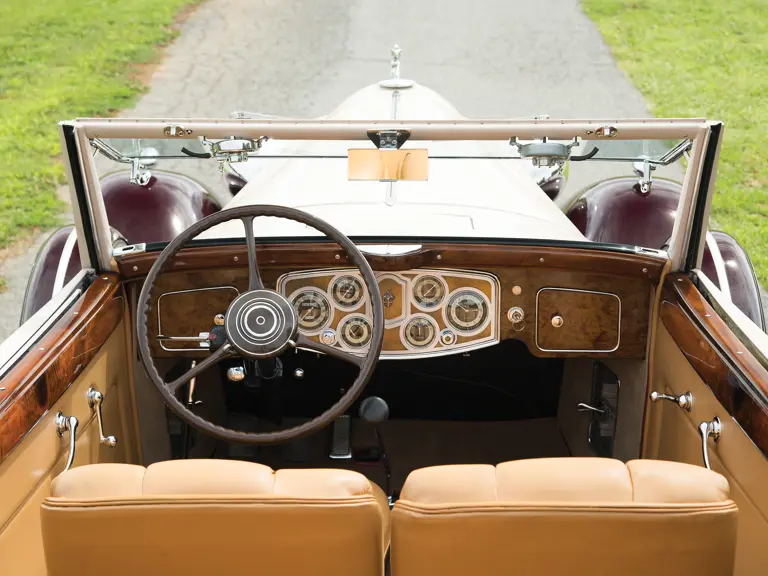
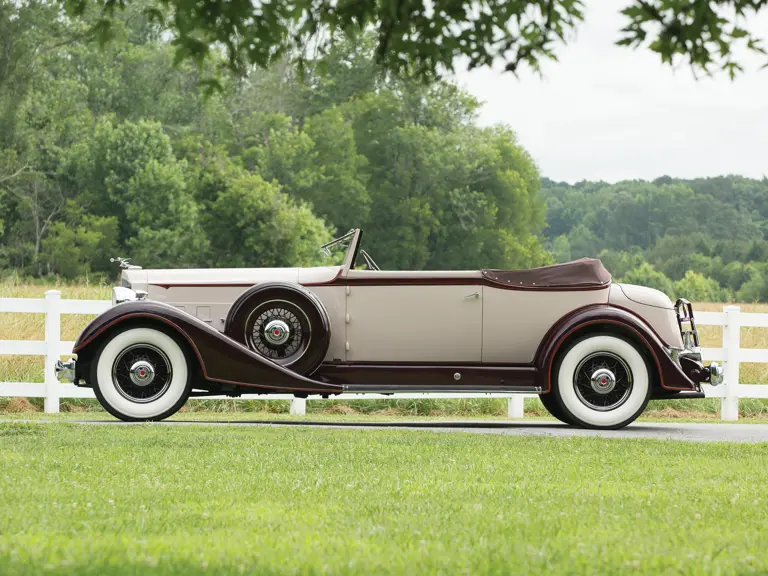

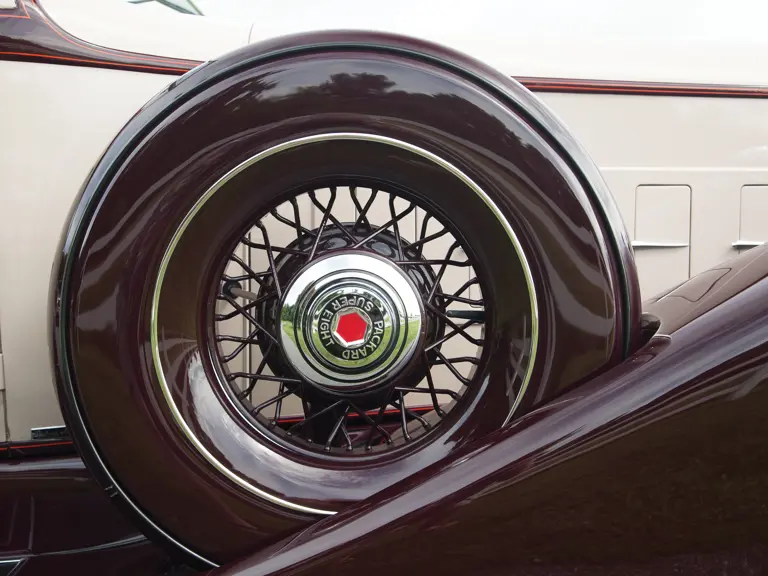

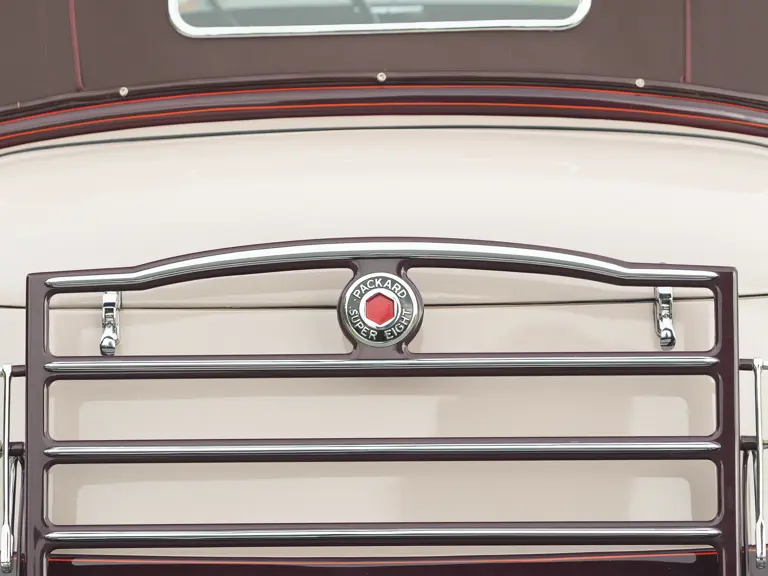
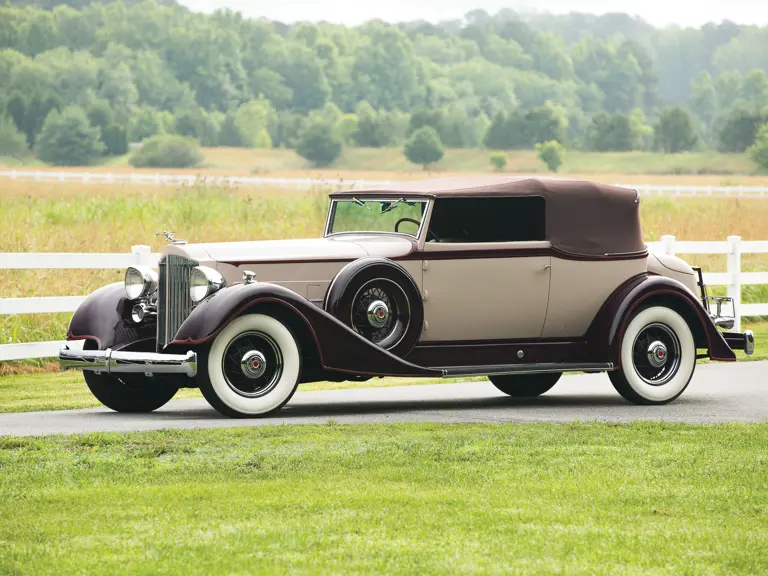
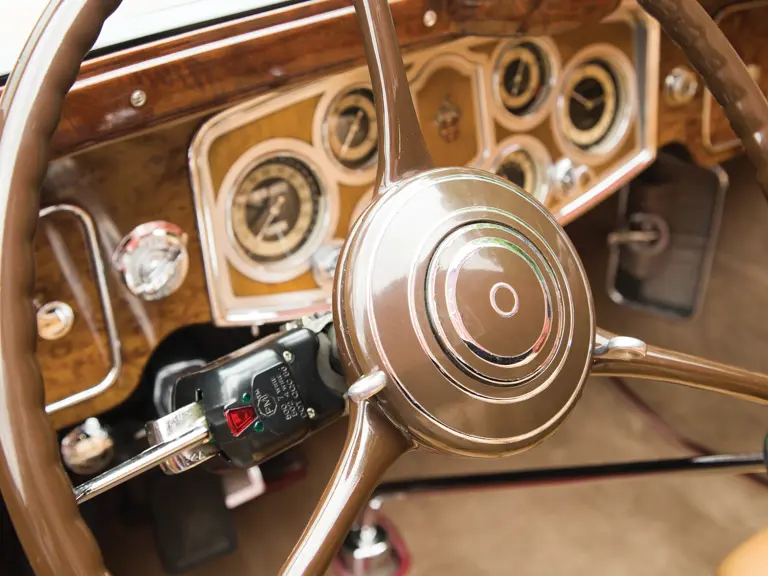
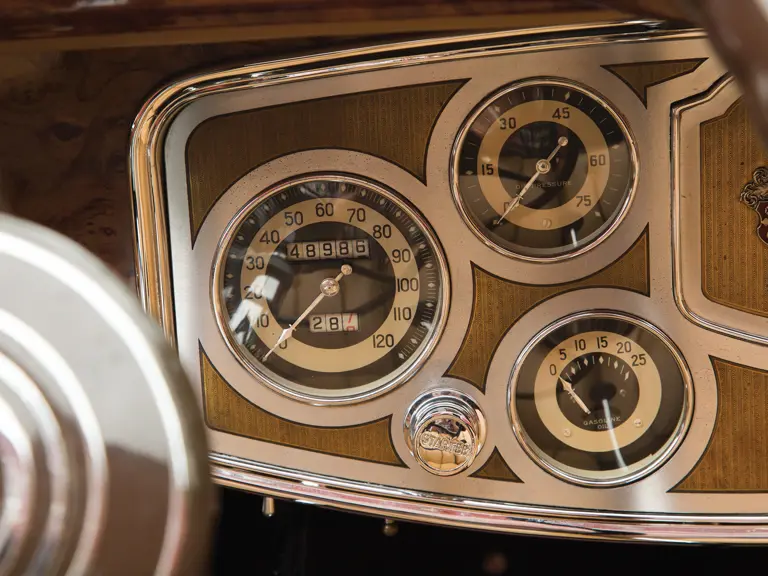



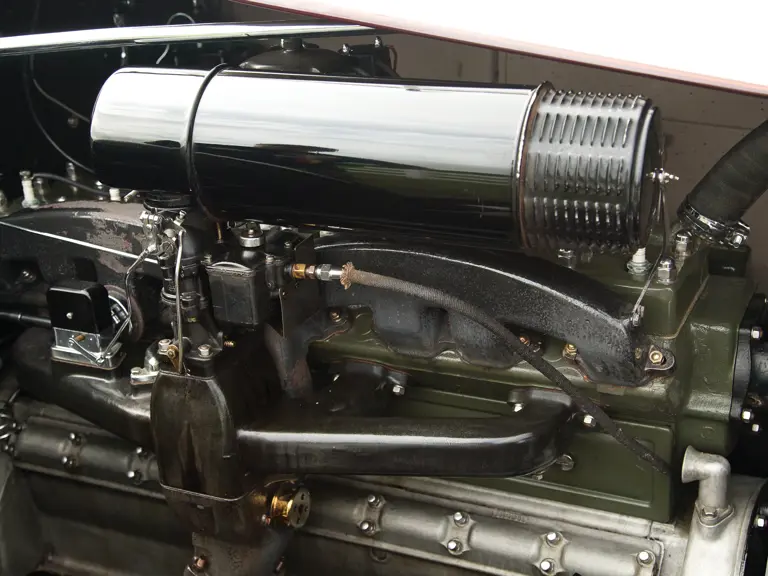

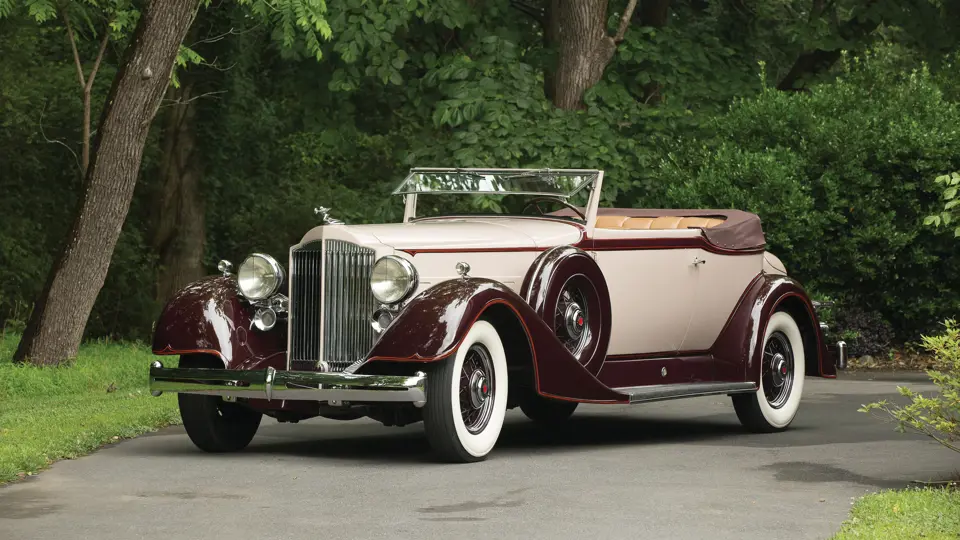
 | Plymouth, Michigan
| Plymouth, Michigan
